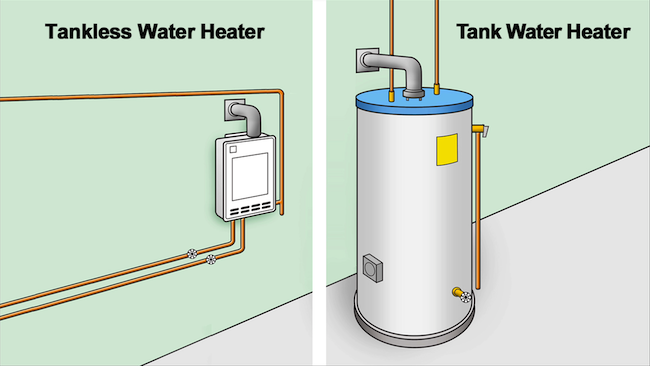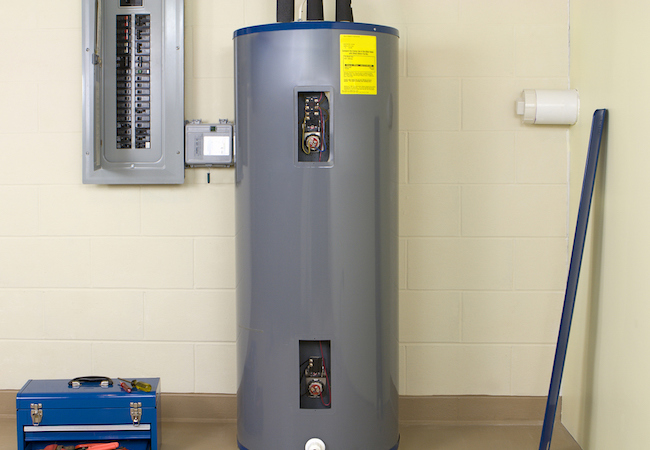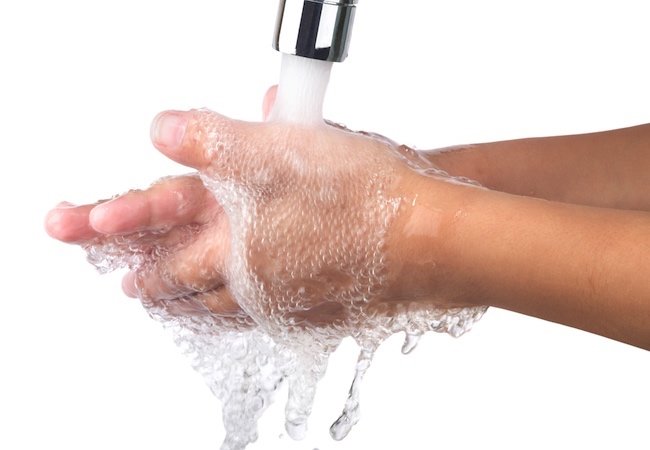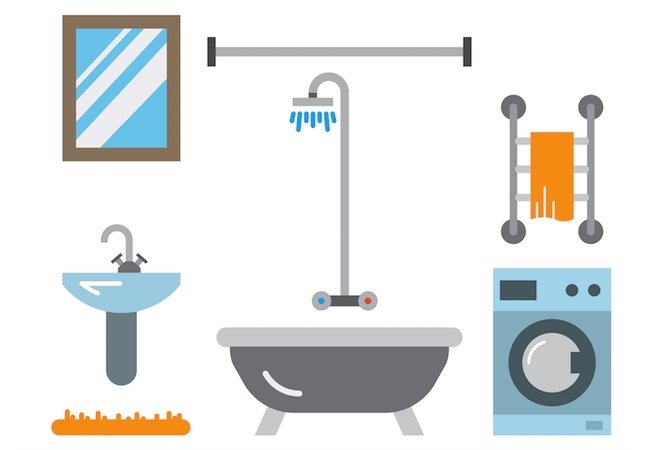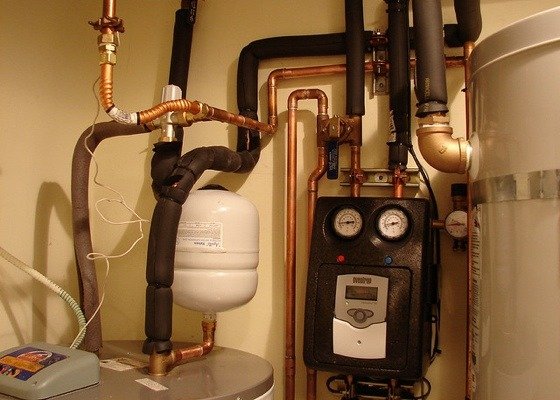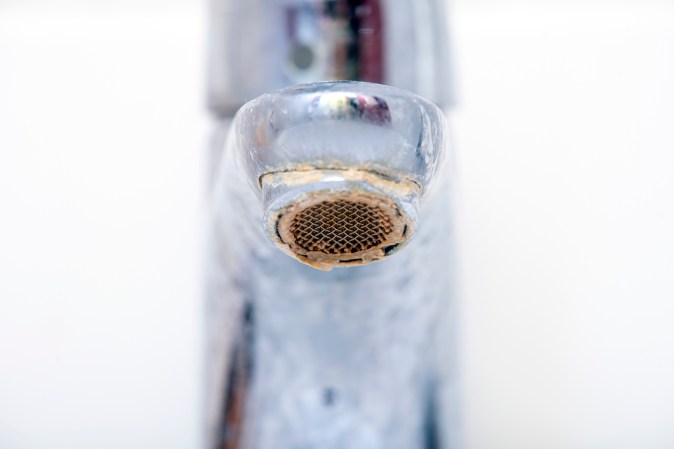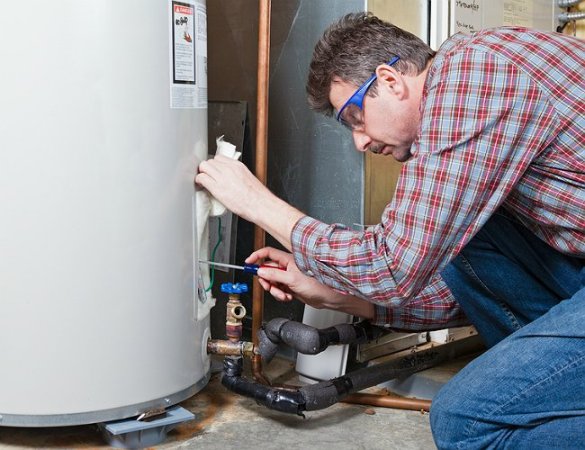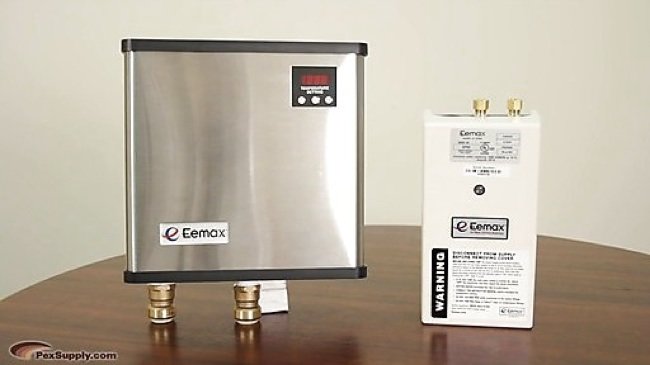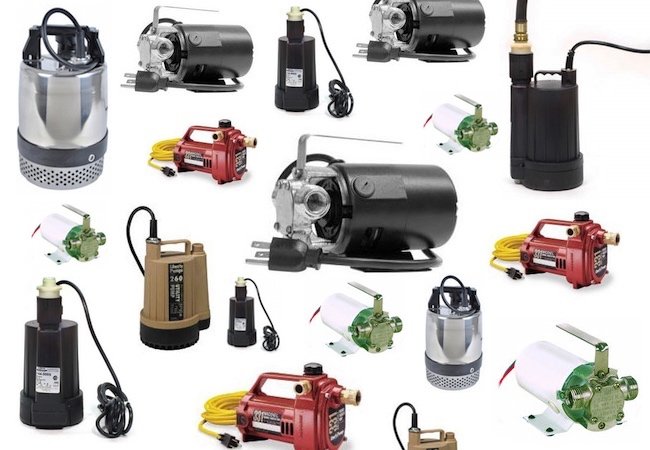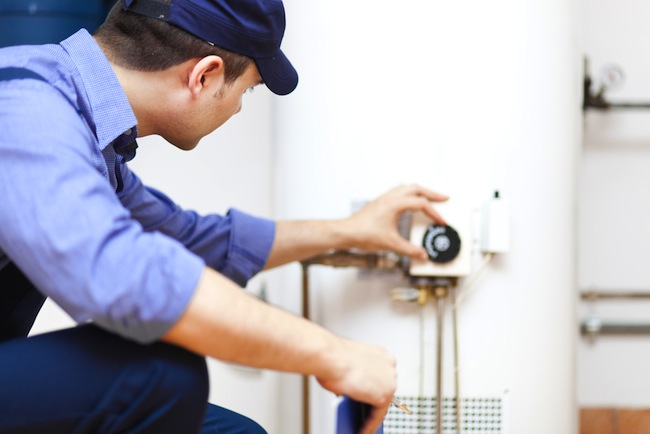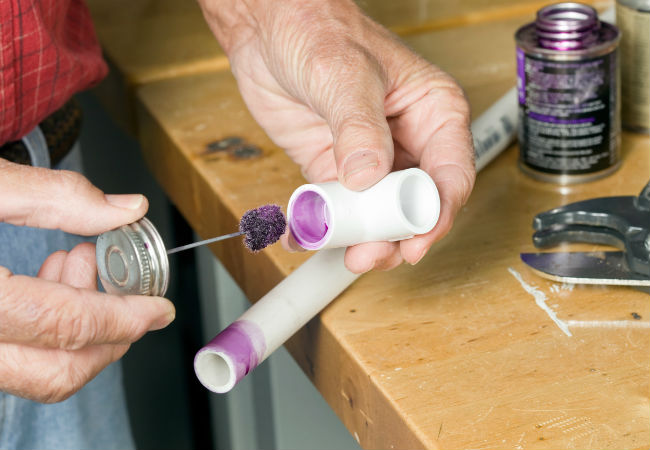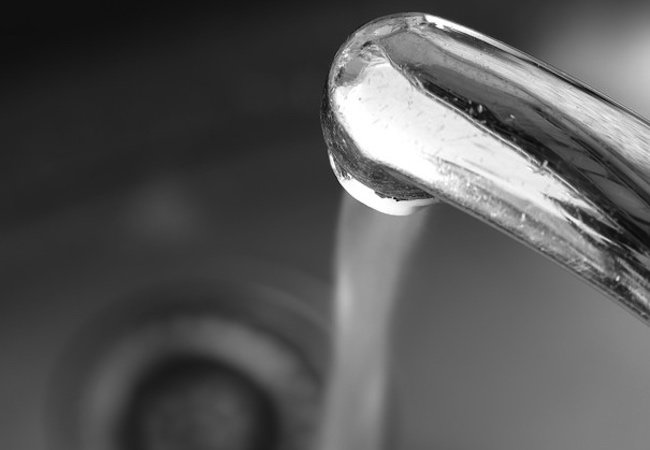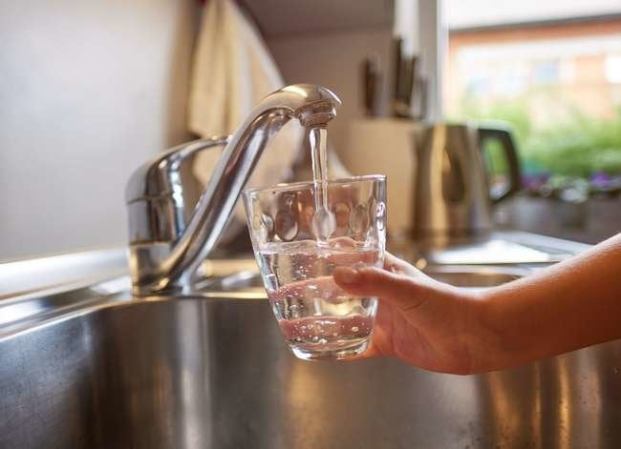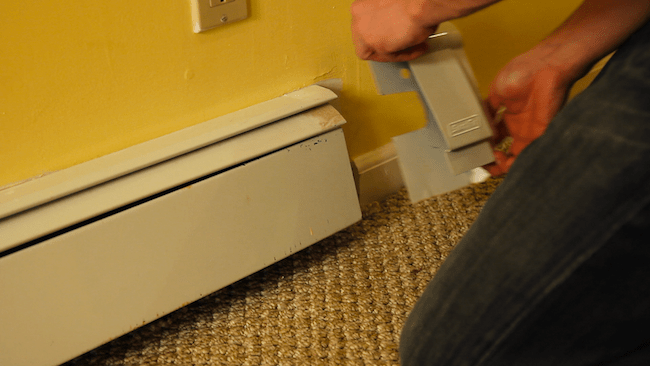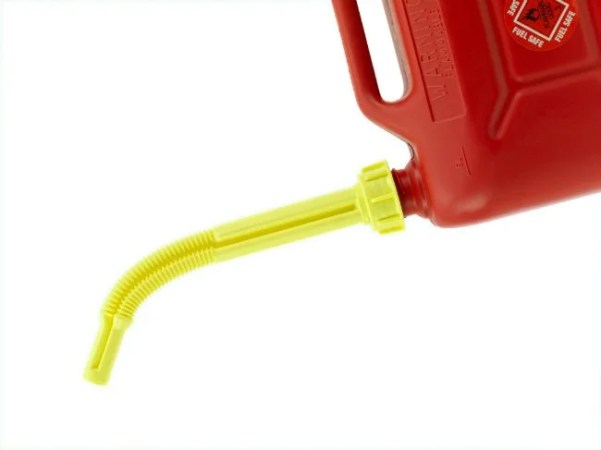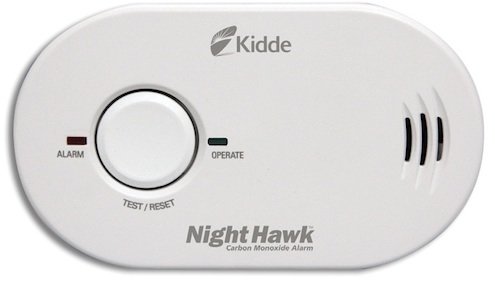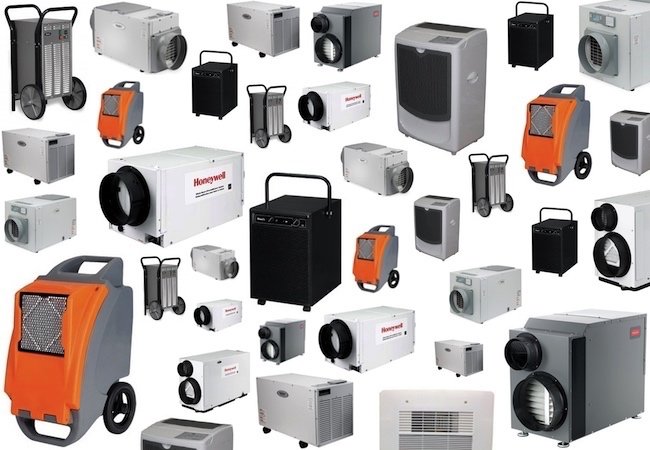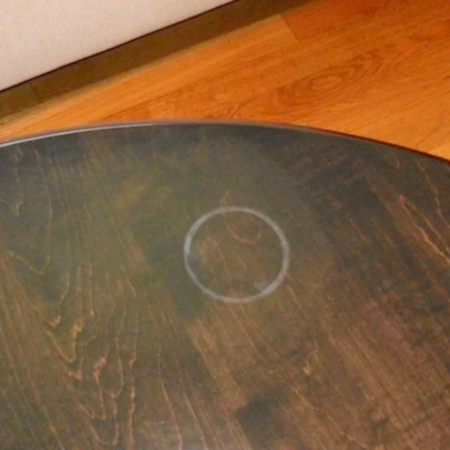We may earn revenue from the products available on this page and participate in affiliate programs. Learn More ›
While we often take a hot shower or bath for granted, it’s important to note that up to 20% of a household’s annual energy expenditures come from heating hot water. That makes it the second largest utility expense in the home, according to the U.S. Department of Energy, averaging around $400 to $600 per year. If you are looking to install a new hot water heater—or replace an existing one—the type, size and efficiency of the unit you choose will have a big impact on its performance and long-term savings.
Tank vs. Tankless Water Heaters
There are a number of different types of water heaters to consider from heat pumps to solar-powered units, but the most common are tank and tankless.
- Traditional, tank-style water heaters are large metal cylinders that keep hot water stored and on reserve for when it may be needed. Since they typically range in capacity from 40 to 60 gallons and are generally about 60″ tall by 24″ wide, they are often installed in a basement or laundry room.
- Tankless water heaters (also known as “on demand” water heaters) turn on only when hot water is required. With no holding tank, the system is not only more compact—typically 20″ wide by 28″ long by 10″ deep—but more efficient since it is not storing a reserve of hot water (or compensating for its subsequent heat loss). Tank-style water heaters are usually less expensive than tankless units, but tankless models generally last longer: a traditional water heater usually lasts 10 to 13 years, while tankless water heaters can last up to 20 years.
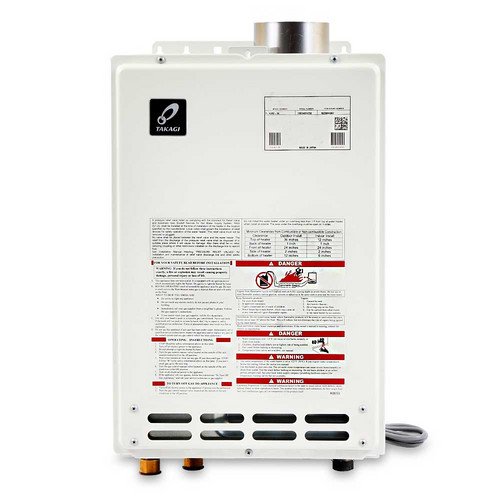
Direct- vs. Indirect-Fired Water Heaters
Regardless of whether the unit is tank or tankless, water heaters generally fall into two categories: direct-fired or indirect-fired.
- Direct-fired means that the water in the tank is heated directly by the heat of a flame; these units are generally used in homes with warm air furnaces. In direct-fired heaters, fuel is burned in a combustion chamber under the water storage tank, then hot flue gases heat water in the tank.
- Indirect-fired refers to water heaters that get hot water from a boiler or furnace and then heat water by transferring it through a heat exchanger located in the storage tank. The energy stored by the storage tank allows the furnace to turn on and off less often, which can save energy and money.
Fuel Type
The fuel source is another important consideration when selecting a water heater. While there are hot water heaters compatible for gas, oil, electric, propane, and even solar, each has its own advantages and disadvantages.
- Natural gas units produce hot water quickly and are available in various sizes and models, but they require venting through a chimney or wall.
- Liquid propane water heaters have similar venting requirements to natural gas, but they require a storage tank and regular fuel deliveries.
- Oil water heaters produce hot water faster than any other method, but there are fewer models from which to choose.
- Electric water heaters are easy to install and do not require special venting, but they require more energy in comparison to other energy sources.
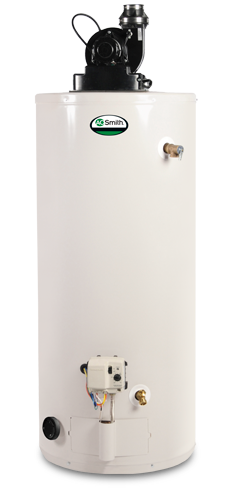
Installing a Water Heater
If you are replacing an existing water heater, you may be able to tackle the job yourself. “Replacing an old water heater with a newer comparable model is something a DIYer may be able to accomplish,” explains Daniel O’Brian, a technical expert from online retailer SupplyHouse.com. “Provided the venting, voltages, and fuel type match up, you would simply shut off the gas and electric, isolate the heater, drain the tank (carefully as the water may still be hot), disconnect it from the system, and swap it out for the new one.”
“Be mindful that the connections from an old unit to a new one might not be in the exact same place, so some re-piping may be in order,” O’Brian continues. “Compare the spec sheets of your new unit to the locations of the connections on your old model to get an idea if there are any changes necessary for a straight swap.”
“A new install of a water heater requires running gas lines, electrical, and setting up proper ventilations,” O’Brian adds. “As such, it should generally be left up to a professional.”
SupplyHouse.com offers a large selection of water heaters and accessories from the top manufacturers in the industry. To learn more about water heaters, watch the video below or visit SupplyHouse.com.
This post has been brought to you by SupplyHouse.com. Its facts and opinions are those of BobVila.com.

